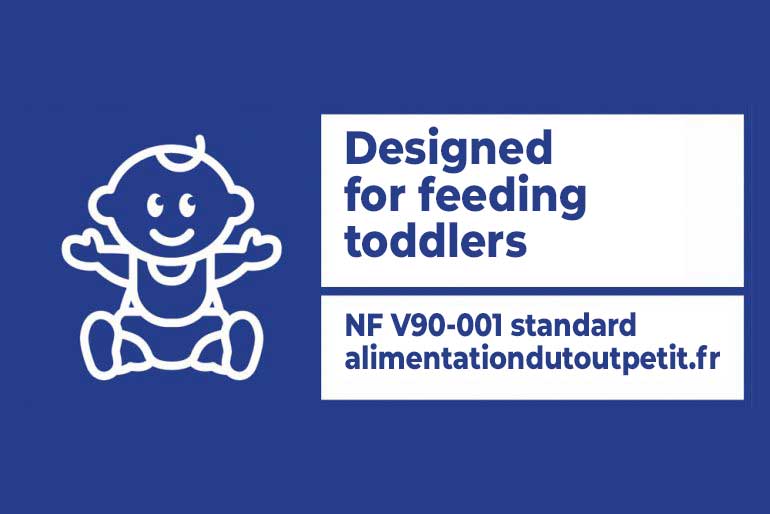The four questions posed by the toddler food standard

The NF V90-001 standard enables manufacturers and farmers to use a graphic symbol to help disseminate information on the special nutritional requirements of children from birth to 3 years of age. We explain in four points.
Why create a standard for baby foods?
Parents sometimes have unfounded fears about ready-to-eat products. Some people try to avoid foods containing preservatives, for example, even though these are prohibited by French regulations for foods intended for infants and young children (under 3 years of age). Another point: pediatricians observe that parents follow their recommendations up to the child’s first birthday, but may find themselves at a loss at the sensitive moment of diversification. The voluntary standard provides answers to both these questions. Its application should help guide parents and healthcare professionals in their choice of foods for infants.
Which foods are covered by the NF V90-001 standard, and what does it require?
The voluntary standard applies to foods for children aged 0-3 – excluding dietary supplements – distributed on the French market, whether they are ready-to-eat products or those intended for meal preparation, at home or in a crèche, for example. For manufacturers and producers, this standard sets out requirements for the provision of messages and information, and recommendations on infant nutrition, the environment and parental behavior during meals. All these elements can be found on the www.alimentationdutoutpetit.fr website, and must be brought to the attention of consumers in one way or another by professionals wishing to join the scheme.
How can you spot a product that complies with the standard?
A graphic symbol, presented in the appendix to the standard, is proposed to help identify products complying with NF V90-001. Producers and manufacturers can therefore decide of their own accord to affix this symbol to their products when they feel they meet the requirements of the standard. This is a self-declaration. The professional who decides to affix the symbol assumes sole responsibility. If the product in question does not meet the requirements of the regulations and standard, affixing this symbol may constitute deception, and the professional may be subject to the penalties laid down in the French Consumer Code.
Who developed the NF V90-001 standard?
Syndicat Français de la Nutrition Spécialiséestandardization committee representing all interested parties. This standardization committee brought together producers, manufacturers, healthcare professionals, representatives of the Ministries of Agriculture, Health and the Economy, via the department responsible for fraud control, and scientific experts. The NF V90-001 national standard is therefore the result of a collective effort. Over the next five years, AFNOR will bring together the members of the standardization committee to gather their feedback: the voluntary standard may be updated, maintained as it stands, or withdrawn, if the players so wish.